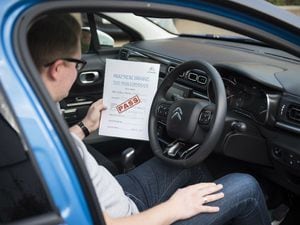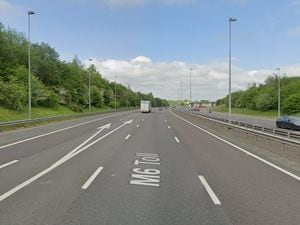Driven to distraction: Region’s driving test hotspots are revealed
If you’re planning to take your driving test anytime soon, you might want to consider making the hop over the Welsh border to Llandrindod Wells.

Because more than three-quarters of learners who take their test at the driving test centre in Powys pass.
Yet in Wolverhampton, only 34.1 per cent are seen tearing up their learner plates in delight after taking their test. Nearby Featherstone is little better, with just 39 per cent of tests successfully negotiated.
New figures released by the Driver and Vehicle Standards Agency show the average pass rate for driving test centres across England and Wales is 46 per cent. But they also show that this figure masks huge variations between different test centres.
How the figures compare:
The toughest test centre in the country is The Pavilion in Birmingham. Whether it’s the busy Second City traffic that bamboozles learners, or a particularly stringent group of examiners, only 29 per cent of tests are completed successfully. Gairloch, in the Scottish Highlands, has the highest pass rate at 81 per cent.
The figures show that pass rates in the West Midlands are generally better than the national average, with Shropshire and Staffordshire coming out on top.
In Ludlow the pass rate is 52 per cent, slightly ahead of Cannock at 51 per cent, while in Lichfield and Stafford exactly half pass the test.
Shrewsbury and Whitchurch centres both have 49 per cent pass rates, followed by Dudley’s Lower Gornal test centre on 48 per cent, Oswestry at 47 per cent, and Telford at 46 per cent.
Also in Powys, the centre in Newtown had a pass rate of 57.4 per cent. It was one of just 21 centres in the UK where female learners had a higher pass rate than male ones, with 59.7 per cent of female candidates passing compared to 55.3 per cent of male drivers.
Rob Gill, who runs a driving school in Perton, said the location of the test centre in Spring Road, Ettingshall, was one the reasons the Wolverhampton pass rate was so low.
Difficult
“Whichever way you go, you have to go along a busy dual carriageway,” he said.
“You either have to go along the Black Country Route or the Birmingham New Road, and until you have practised things like traffic islands, it is difficult.”
Mr Gill said large traffic islands, such as those along the Black Country Route, were major bugbears.
He said it was possible that demographic factors could also be a factor, and it might be that some learners chose to take their test before they were ready.
“I have had people come to me and say, ‘can I take my test in Wales, it’s easy there?’, and it may well be, but if they then go and drive on the Black Country Route they are going to come unstuck.”
Chris Blake, a driving instructor based in Telford, said the figures reflected his experience, and said it was inevitable that the pass rates would be higher in quieter areas such as Llandrindod Wells.
“I know some of the kids say in Birmingham it’s quite tricky,” he said.
Changes
“I think the instructors are very fair, both in Telford and in Shrewsbury.
“I sometimes get people asking me if they can take it in Whitchurch, because it’s quite small there, but I say if they want to take it in Whitchurch they should find an instructor in that area, because I don’t know the test routes.”
The figures all relate to a three-month period between April and September 2018. This followed changes to the test which many said made it tougher than before.
Learners must now navigate for 20 minutes using a sat-nav, and explain how to test the brakes, clean the windscreen and demist their windows while driving.
Overall, there is little evidence that learners are finding the new test more difficult. The pass rates in Lichfield, Newtown, Llandrindod Wells, Ludlow all improved compared to the previous year, while in Dudley, Shrewsbury and Telford they showed only a slight decline.
However, the pass rates at Wolverhampton, Oswestry, Cannock, and Stafford showed significant declines.
Another factor in the variation might be the number of drivers taking tests. While the centres in Wolverhampton, Dudley, Featherstone and Lichfield each handled more than 4,000 tests over the period, Llandrindod Wells handled just 348.
DVSA chief driving examiner, Mark Winn, said: “The driver testing and training regime tests candidates’ ability to drive safely and responsibly as well as making sure they know the theory behind safe driving.
“All candidates are assessed to the same level and the result of their test is entirely dependent on their performance on the day.
“We constantly monitor our examiner’s performance so they conduct and assess driving tests in accordance with the standards set. This includes the supervision of live tests.”





